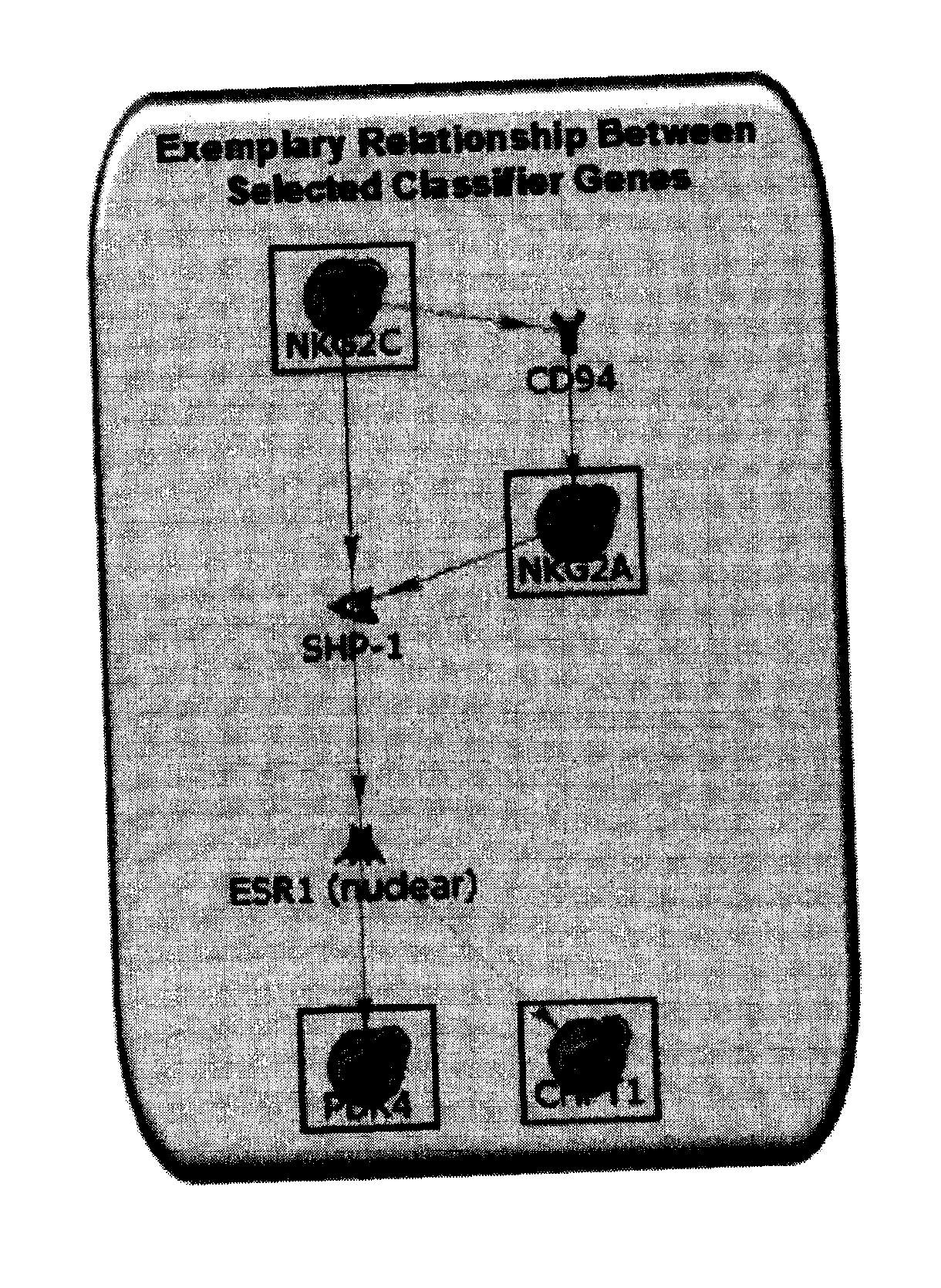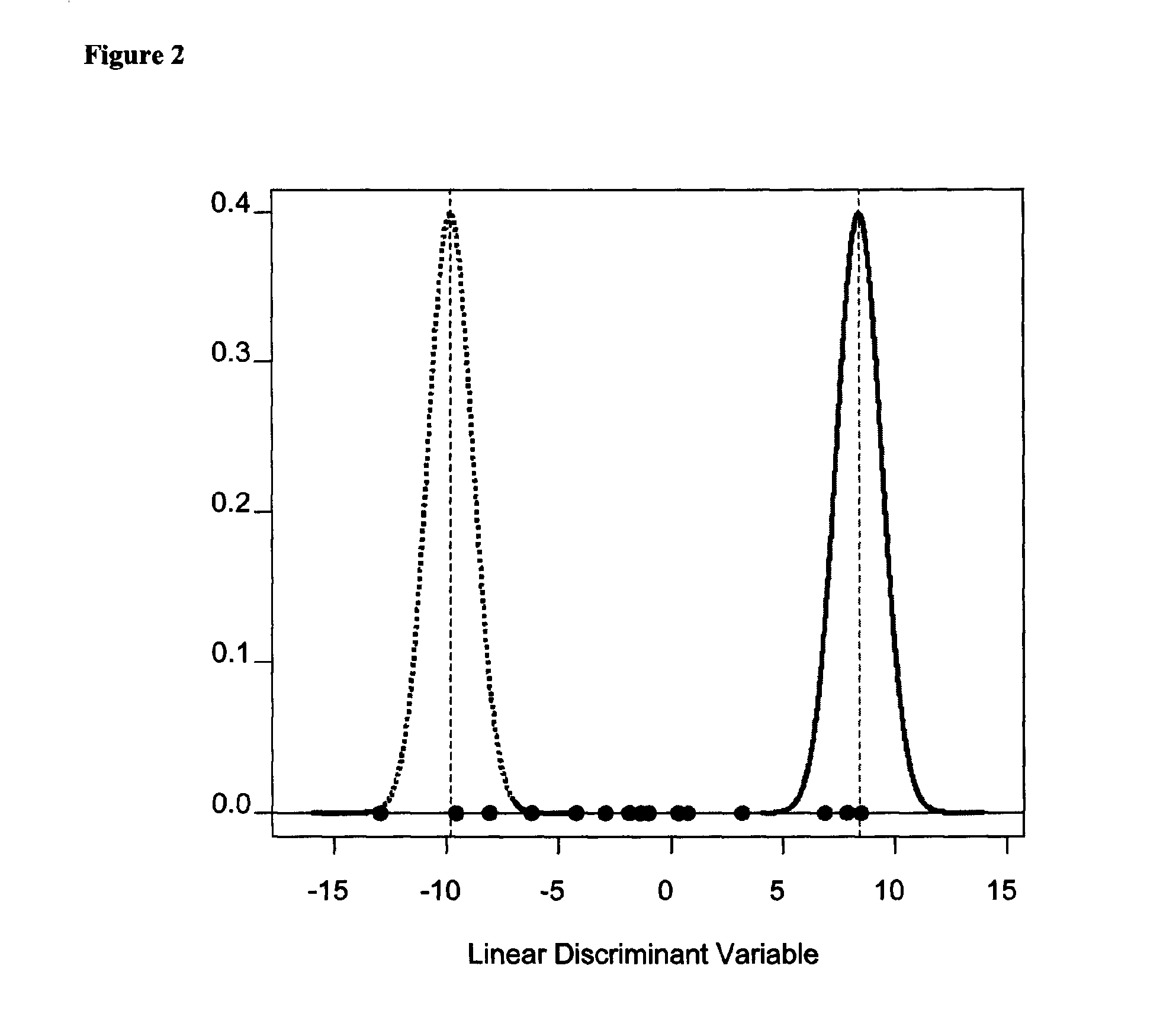Methods of diagnosing chronic cardiac allograft rejection
a technology of allograft and diagnosis method, which is applied in the field can solve the problems of inability to accurately diagnose cav, etc., and achieve the effect of diagnosing chronic allograft rejection
- Summary
- Abstract
- Description
- Claims
- Application Information
AI Technical Summary
Benefits of technology
Problems solved by technology
Method used
Image
Examples
example 1
[0232]Following normalization and pre-filtering, 25,215 probe sets remained and were included in the subsequent analysis (Step 2) using the training cohort samples. Using robust-test, a total of 106 probe sets were identified as having FDR <10%. A heatmap was constructed for these probe sets to visualize the relative expression levels between CR and S samples (FIG. 4). In addition, over representation analysis was carried out to observe the type of biological and molecular processes encompassed by the differentially expressed genes compare to the rest of the genes present on the microarray. The significantly enriched gene ontology (GO) terms were identified, and those with p-value <0.05 have been summarized in Table 5.
TABLE 5Statistically significant gene ontology terms as identified byenrichment analysis (FatiGo) for genomic expression profiling.Process or responseGeneOntology term (GO term)Immune responseGO: 0006955response to biotic stimulusGO: 0009607humoral immune responseGO: 0...
example 2
Biological Pathways
[0235]Using a combination of bioinformatics and literature-based approaches, various pathways have been identified based on selected differentially expressed genes. Without wishing to be bound by theory, interactions between them have also been elucidated in our current results. FIG. 3 illustrates a pathway-based relationship between the biomarkers NKG2A (KLRC1), NKG2C (KLRC2), PDK4 and CHPT1.
[0236]Without wishing to be bound by theory, interactions between the biomarker genes and / or gene products may include:
1. NKG2C (KLRC2)→CD94→NKG2A (KLRC1)
[0237]NKG2C (KLRC2)→CD94 (Ding et al 1999. Scand. J Immunol 49:459-65; Gunturi et al 2004. Immunol. Res 30:29-34)[0238]CD94→NKG2A (KLRC1) (Brooks et al 1997. J Exp Med 185:795-800; Brooks et al 1999. J. Immunol. 162:305-13; Dulphy et al 2002. Int Immunol 14:471-9)
2. NKG2C / NKG2A (KLRC2 / KLRC1)→SHP1→ESR1→PDK4 and CHPT1
[0239]NKG2C / NKG2A (KLRC2 / KLRC1)→SHP1 (Lin Chua et al 2002. Cell Immunol. 219:57-70; Le Drean et al 1998. Eur J ...
example 3
Proteomic Analysis Results
[0242]A total of ˜2500 protein groups codes (PGC) were found in at least one of the 13 samples included in the training cohort. These PGCs were pre-filtered (Step 1)—PGCs which were detected in at least ⅔ of the 7 CR and 6 S samples (i.e., 5 CR and 6 S samples) were used for further analysis. Statistical analysis identified 14 of the 129 analyzed proteins with differential relative concentrations with p-value <0.05 (Step 3). A heatmap was constructed to visualize the performance of these significant PGCs in discriminating CR from S samples (FIG. 5). Over representation analysis was also carried out to explore the biological and molecular functions of all the proteins belonging to these protein group codes. The significantly enriched GO terms with p-value <0.05 are shown in Table 7.
TABLE 7Statistically significant gene ontology terms as identified by enrichmentanalysis (FatiGo) for proteomic expression profiling.Process or responseGeneOntology term (GO term)...
PUM
| Property | Measurement | Unit |
|---|---|---|
| temperature | aaaaa | aaaaa |
| temperature | aaaaa | aaaaa |
| temperature | aaaaa | aaaaa |
Abstract
Description
Claims
Application Information
 Login to View More
Login to View More - R&D
- Intellectual Property
- Life Sciences
- Materials
- Tech Scout
- Unparalleled Data Quality
- Higher Quality Content
- 60% Fewer Hallucinations
Browse by: Latest US Patents, China's latest patents, Technical Efficacy Thesaurus, Application Domain, Technology Topic, Popular Technical Reports.
© 2025 PatSnap. All rights reserved.Legal|Privacy policy|Modern Slavery Act Transparency Statement|Sitemap|About US| Contact US: help@patsnap.com



